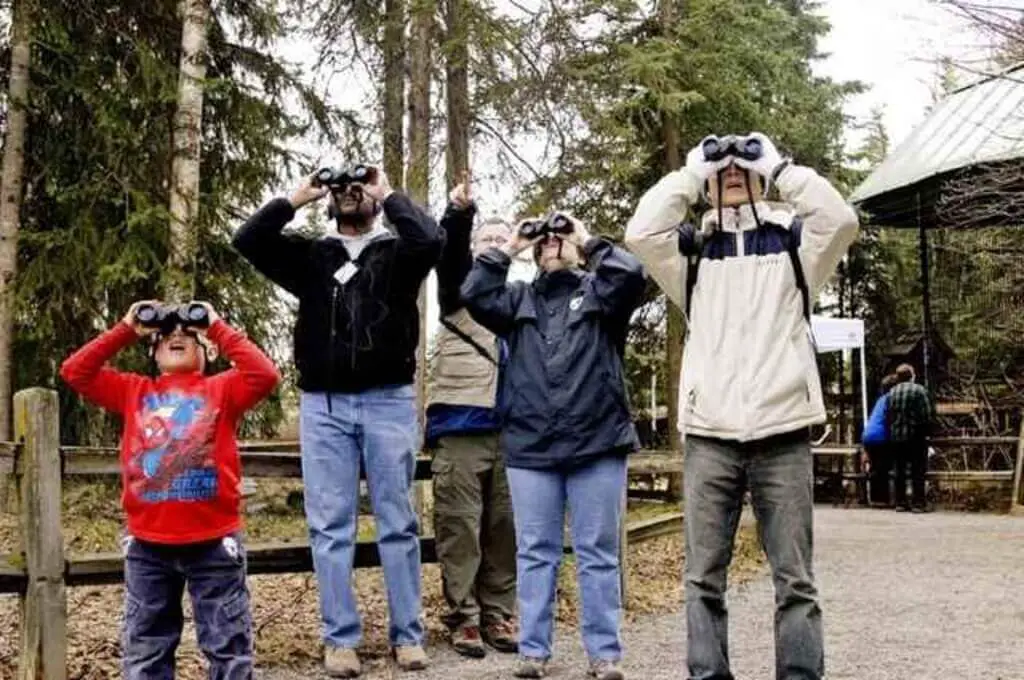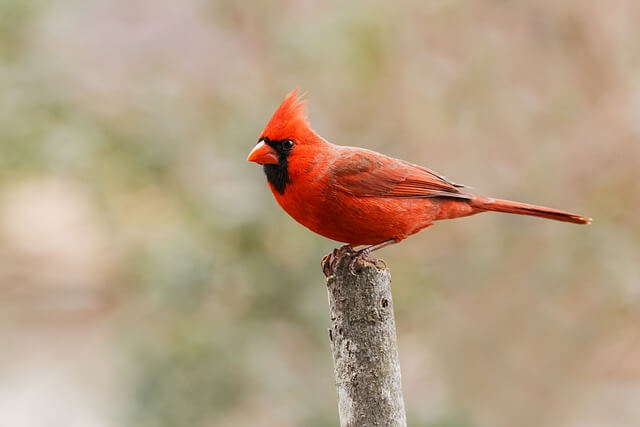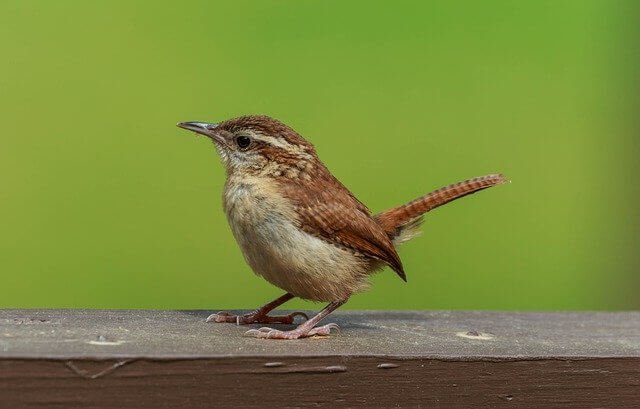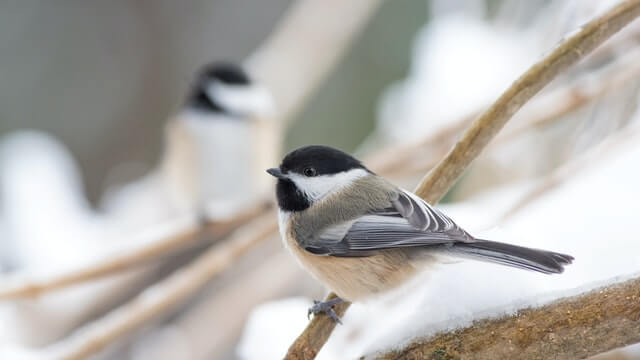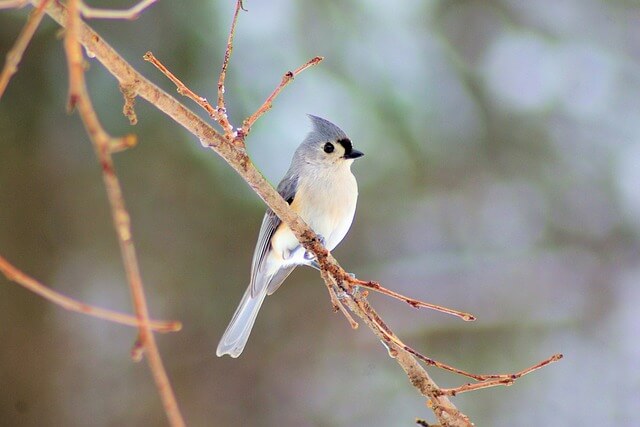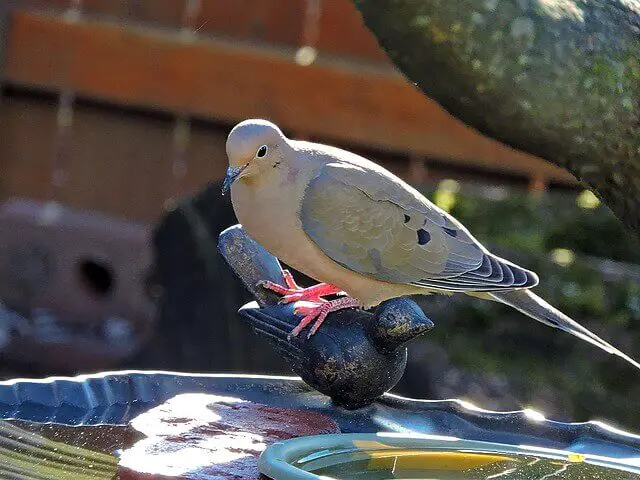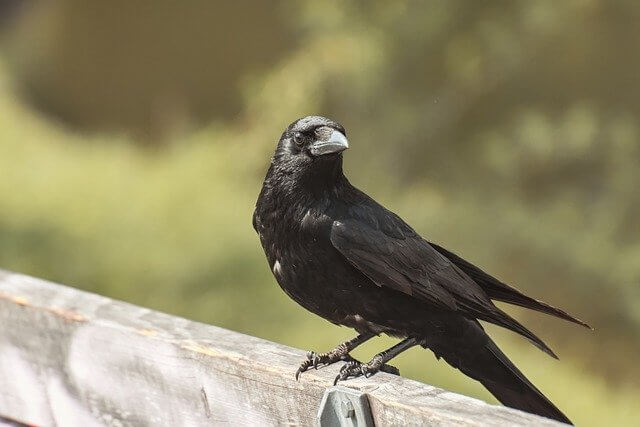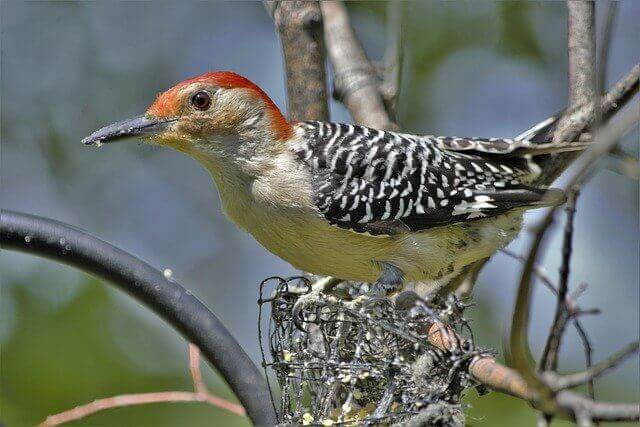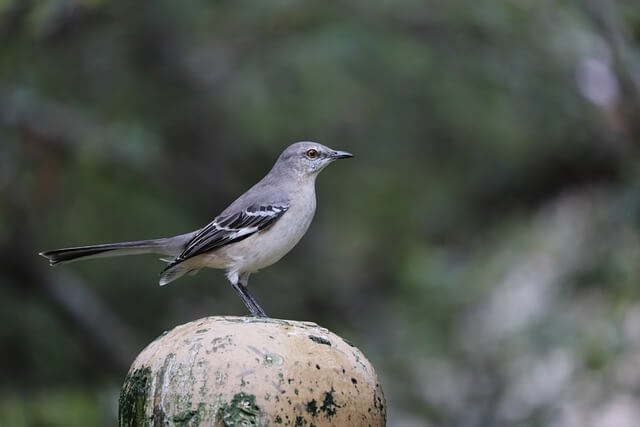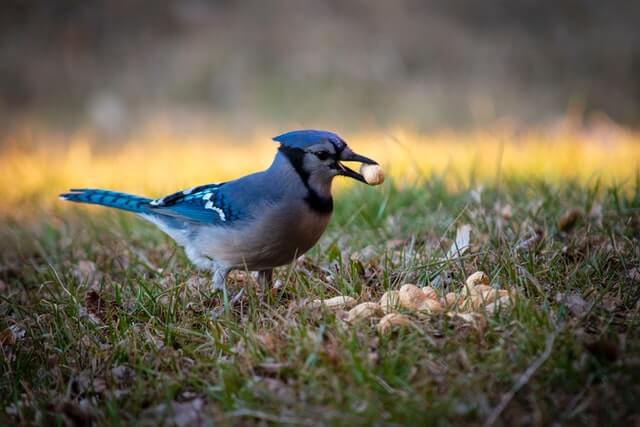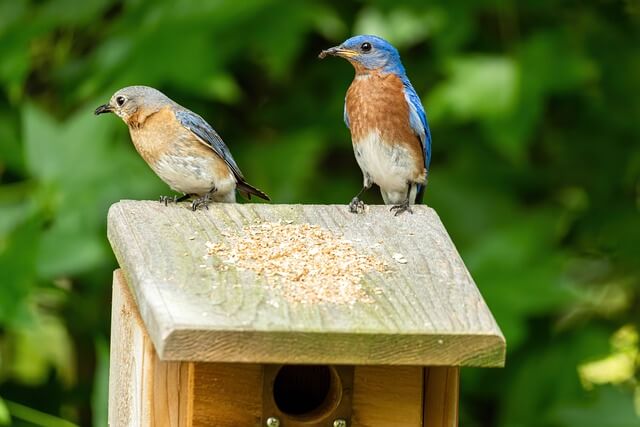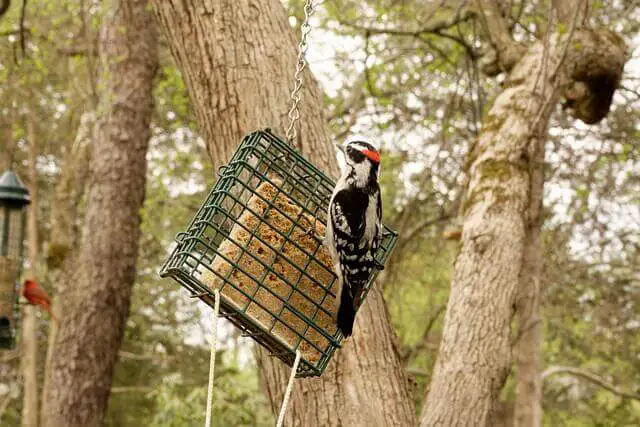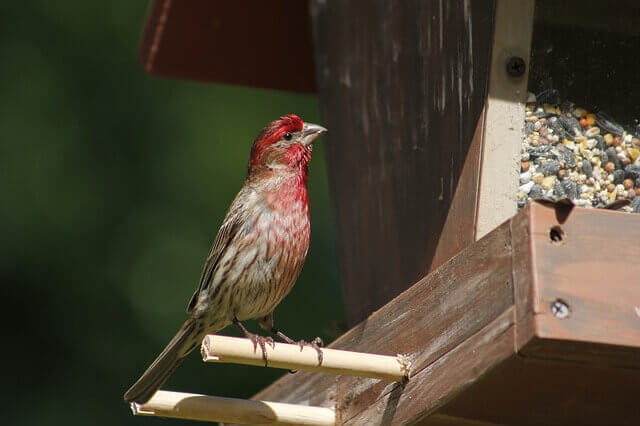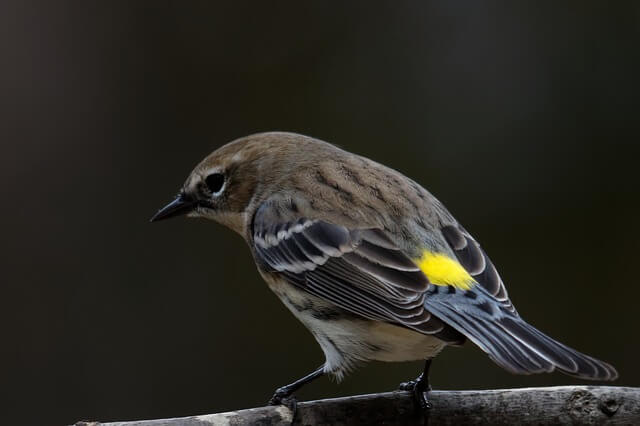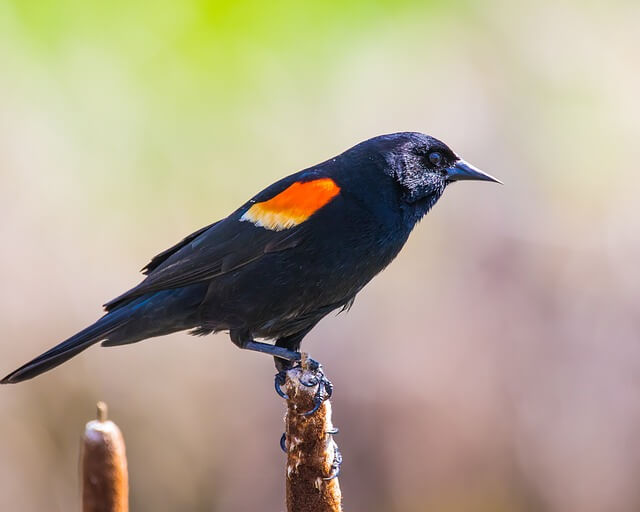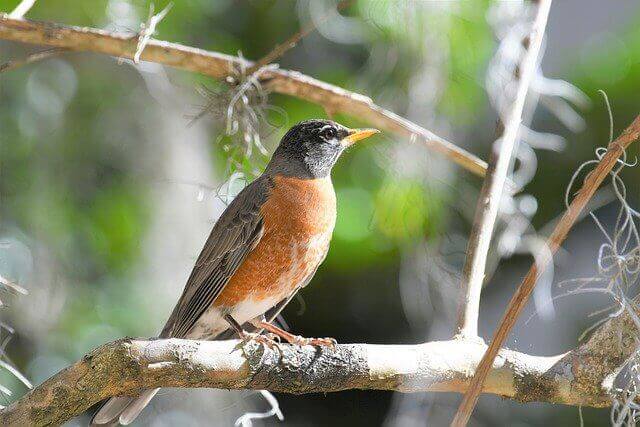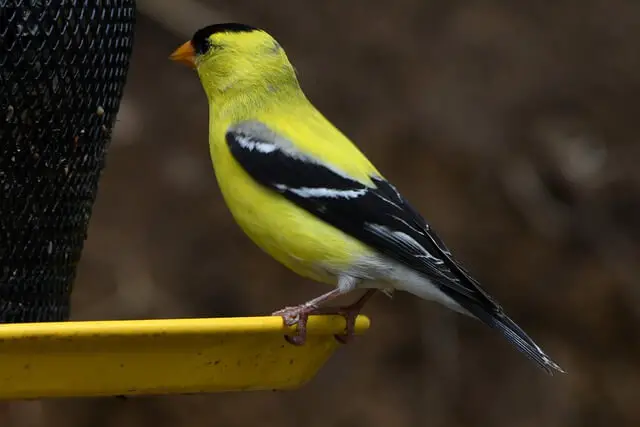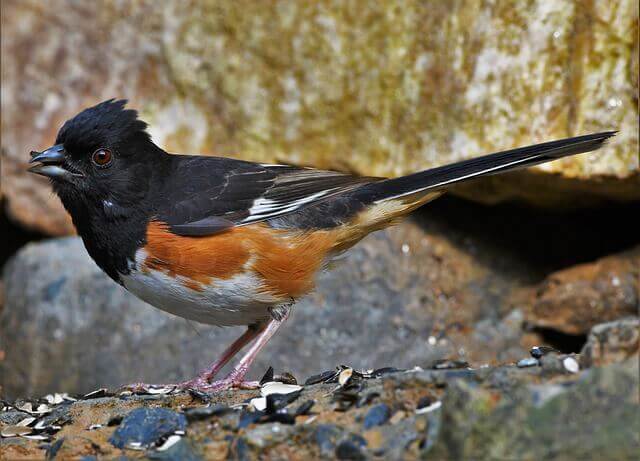Embark on an exhilarating journey through South Carolina’s vibrant birding landscape with our comprehensive field guide. This Ultimate Field Guide showcases the 82 common birds that grace the Palmetto State, offering in-depth insights into their habitats, behaviors, and distinctive features.
Whether you’re a dedicated birder, an outdoor adventurer, or simply curious about the diverse birdlife of South Carolina, this guide provides a detailed exploration of the avian wonders that call this coastal state home.
Table of Contents
- 1 Common Birds in South Carolina
- 1.1 Northern Cardinal
- 1.2 Carolina Wren
- 1.3 Carolina Chickadee
- 1.4 Tufted Titmouse
- 1.5 Mourning Dove
- 1.6 American Crow
- 1.7 Red-bellied Woodpecker
- 1.8 Northern Mockingbird
- 1.9 Blue Jay
- 1.10 Eastern Bluebird
- 1.11 Downy Woodpecker
- 1.12 House Finch
- 1.13 Yellow-rumped Warbler
- 1.14 Red-winged Blackbird
- 1.15 Pine Warbler
- 1.16 American Robin
- 1.17 American Goldfinch
- 1.18 Eastern Towhee
- 2 Bird Watching in South Carolina
- 3 How to Attract Birds to your Yard?
- 4 Various Types of Bird Feeder Options
- 5 Author
Common Birds in South Carolina
Northern Cardinal
The Northern Cardinal is a very popular bird in North America. They have an unmistakable beautiful red plumage with a black mask. You may have seen them on your local bird feeder or pecking at your backyard seed tray. The Northern Cardinal’s natural habitat is forest edges, wetlands, and other thickets throughout eastern North America.
These birds are found from the Canadian border south to northern Mexico, west to California, and east as far as Indiana. They eat seeds from plants such as grasses, berries, fruit trees, wheat fields, and cornfields. These birds typically mate in late winter or early spring with one male usually courting two females.
- Frequency: 62.94%
- Color: Mostly red throughout, with a black mask on the face
- Habitat: woodlands, gardens, parks, backyards, and wetlands
- Range: USA, Canada, Mexico
- Size: 8.2 – 9.3″ inches
- Weight: 33 – 65 grams
- Diet: Fruits, berries, and insects (grasshoppers, beetles, snails, cicadas)
- Family: Cardinalidae
- Genus: Cardinalis
Carolina Wren
The Carolina Wren is a small songbird, that can be found in a variety of habitats in the Eastern United States, from small towns to big cities and everywhere in between. While they don’t typically come into contact with humans, they may be seen on telephone wires or other high places looking for food.
The Carolina wren is also an important part of the natural ecosystem; it eats insects and helps control pests like mosquitoes as well as caterpillars, spiders, seeds, fruit, and berries. It also sings beautifully! It lives and nests on the ground, or in dense vegetation and often near water sources such as ponds, lakes, rivers, marshes, or streams.
- Frequency: 50.07%
- Color: Reddish-brown upper body, and buff-orange color under, with a white chin, throat. White stripe on the eyebrow.
- Habitat: woodlands, gardens, parks, backyards, and wetlands
- Range: USA, Canada, Mexico
- Size: 5.0 – 5.5″ inches long
- Weight: 18 – 23 grams
- Diet: Eats fruits, berries seeds, and insects (Caterpillars, beetles, true bugs, grasshoppers, crickets, spiders, millipedes, snails)
- Family: Troglodytidae
- Genus: Thryothorus
Carolina Chickadee
The Carolina Chickadee is a small, non-migratory bird that can be found in the Eastern United States throughout Northern and Southern California, North Carolina, Texas, Louisiana, Oklahoma, and New Mexico. They have a wide range of habitats such as coniferous forests, oak-pine forests, and mixed deciduous forests.
The Carolina Chickadee will look for areas with low foliage and high cover to nest in, such as under a house or porch, in an abandoned squirrel hole, or in an open field. – They are known to eat seeds from fruit trees like apples and pears, but they also enjoy insects like caterpillars and grasshoppers depending on the season.
- Frequency: 46.91%
- Color: Black cap and throat with white cheeks. Light gray wings, back, and tail.
- Habitat: Deciduous forests, suburbs, parks, backyards
- Range: USA ( New Jersey, Florida, Texas, and Kansas)
- Size: 4.5 – 5.1″ inches long
- Weight: 9 – 12 grams
- Diet: Insects, berries, seeds
- Family: Paridae
- Genus: Poecile
Tufted Titmouse
The Tufted Titmouse is a common songbird that inhabits forests and fields across the Eastern United States. They have an extremely wide range, being found from southern Canada to the Gulf Coast of Mexico. It has been reported as far north as British Columbia in Canada and even Alaska!
This bird feeds on insects, seeds, and berries, but also dines on tree sap and fruits from trees. The Tufted Titmouse has a distinctive tuft of feathers on its head that are used to identify it. It has large eyes, a short stout bill, and its wings are short for an insectivore’s body size (to conserve energy).
- Frequency: 43.23%
- Color: Gray upper body, white chest and belly, with a tufted gray crest on the head.
- Habitat: Deciduous forests, river basin, backyards, swamps
- Range: Canada, USA, and Mexico
- Size: 5.5 – 6.4″ inches
- Weight: 18 – 26 grams
- Diet: Nuts, insects, berries, seeds small fruit, and snails
- Family: Paridae
- Genus: Baeolophus
Mourning Dove
The Mourning Dove is a migratory bird native to North America. They can be found throughout the United States, Canada, and Mexico. It can be seen around suburban areas, forest edges, parks, and even farmlands near where they live in pairs. The species has long been abundant and successful because of its diet, nesting habits, ability to survive human-made structures, and use of man-made feeders.
They feed on seeds such as oats, wheat, and corn; berries; fruits like apple and cherries, but prefer to feed on scraps from garbage cans and other sources of food near houses. Mourning doves also nest near these types of habitats because it is safer for them to stay close to where they find their food.
- Frequency: 42.90%
- Color: Light gray-brown and lighter and pinkish below. Black spots on the wings, with a small dark bill.
- Habitat: Open habitats, prairie, wooded areas, urban areas, farms, and grassland.
- Range: USA, Canada, Mexico, Central America, Greater Antilles
- Size: 12″ inches length
- Weight: 112 – 170 grams
- Diet: Rapeseed, corn, millet, safflower, sunflower seeds, pokeberry, sesame, and wheat.
- Family: Columbidae
- Genus: Zenaida
American Crow
The American Crow is a large, black bird that’s native to North America. It has an average wingspan of 50 cm (19.7″ inches) and weighs about 500 grams. They can be found in both rural and urban areas where they eat mainly seeds, insects, berries, eggs, and small animals. Crows are very intelligent birds who have the ability to remember people’s faces for up to 5 years!
In addition to being very smart, crows are also quite resourceful and have been known to take advantage of our urban areas for food sources such as garbage dumps or uncovered trash cans. Crows are very social animals, living in large groups called “murmurations”. They can also imitate the sounds of other birds and mammals such as cats or coyotes.
- Frequency: 39.68%
- Color: Black
- Habitat: Open country, farms, parks, woodlands, towns, cities
- Range: Canada, USA, Mexico
- Size: 16 – 21″ inches in length
- Weight: 315 -620 grams
- Diet: invertebrates, carrion, seeds, eggs fish, grains, mice, frogs, and other small animals.
- Family: Corvidae
- Genus: Corvis
Red-bellied Woodpecker
The Red-bellied Woodpeckers are primarily found in the southern United States and some parts of Mexico. It can be identified by its bright red cap, and belly, with black, and white barred pattern stripes on the back, wings, and tail. These birds typically live near wooded areas and are usually seen around trees or other tall structures where they can build their nests high off the ground for safety.
Red-bellied Woodpeckers have an interesting diet consisting mainly of insects, but they also eat fruits, nuts, seeds, and berries. They will eat from any bird feeders near their nest to avoid competition with other birds for food.
- Frequency: 37.90%
- Color: Gray on body and face and underparts. Black and white pattern on wings, back, and tail.
- Habitat: Forests, backyards
- Range: Southern Canada, Eastern United States, Florida
- Size: 9 – 10.6″ inches long
- Weight: 56 -91 grams
- Diet: Insects, small fish, oozing sap, tree frogs, and eggs of small birds.
- Family: Picidae
- Genus: Melanerpes
Northern Mockingbird
The Northern Mockingbird is a common bird found in the United States. They are most often seen during the summer months, and can be found near bodies of water like lakes or rivers, and can sometimes be seen in urban areas, rural farmland, and woodlands. Mockingbirds are omnivores which means they eat both plants and animals.
Their diet consists mainly of insects such as caterpillars, beetles, ants, wasps, spiders, grasshoppers, etc., The northern mockingbird does not migrate but instead spends its entire life on one territory usually around an area with plenty of trees for nesting sites. They are known for their intelligence, ability to mimic sounds and aggression when defending territory or young.
- Frequency: 37.65%
- Color: Gray upper with white underparts. Black and white wing bars.
- Habitat: Forested areas, parks, and gardens
- Range: Southeastern Canada, USA, Northern Mexico, Cayman Islands, Greater Antilles
- Size: 8.0 – 11″ inches long
- Weight: 40 – 58 grams
- Diet: Berries, fruits, seeds, arthropods, earthworms, and occasionally lizards
- Family: Mimidae
- Genus: Mimus
Blue Jay
The Blue Jay is a common bird that can be found in the summer months. They are known for their beautiful blue and white feathers, as well as their signature crest on top of their head. It’s native to North America, Central America, and parts of South America. The Blue Jays eat mostly berries, fruit from plants like hickory nuts, nuts, seeds from trees like oaks, and insects; this includes the larvae of bees or wasps. It’s most likely to be found in woodland and shrub areas, though it can also be seen near residential neighborhoods.
If you see one flying around in your backyard try to get a picture because they aren’t as common as other birds. The Blue Jay can be found in many habitats including forests, farmlands, suburbs, and even cities. They are typically seen on tree branches or wire fences as they forage for food.
- Frequency: 36.95%
- Color: Has a blue crest on its head, blue wings, back, and tail, and has a white face and belly.
- Habitat: Deciduous and mixed forests, mixed woodlands, backyards, parks
- Range: Southern Canada, Eastern and Central United States, Florida and Texas
- Size: 8 – 12″ inches
- Weight: 70 – 100 grams
- Diet: Nuts, seeds, caterpillars, grasshoppers, and beetles
- Family: Corvidae
- Genus: Cyanocitta
Eastern Bluebird
The Eastern Bluebird is a medium-sized songbird that resides in the eastern part of North America. The bluebirds migrate to their summer home and can be found throughout much of Canada, southern parts of the United States, and Mexico. Eastern bluebirds typically eat insects and fruits but will also eat seeds, berries, caterpillars, and occasionally eggs or nestlings. It’s easy to identify by its blue and white coloration, and it sings throughout the day with a variety of different melodies.
The bluebirds are normally very shy and often keep to themselves. They build their nests high up in trees but will sometimes use an abandoned nest from another species such as woodpeckers or sparrows. They are most commonly seen from March to November, but they may migrate farther south during the winter months.
- Frequency: 30.51%
- Color: A Blue head, back, and wings. reddish-brown breast
- Habitat: Open woodlands, farmlands, and orchards.
- Range: Southern Canada all the way down to the Gulf states, East of the Rockies, and south to Arizona to Nicaragua
- Size: 5.5 – 7.1″ inches in length
- Weight: 20 – 33 grams
- Diet: insects and other invertebrates
- Family: Turdidae
- Genus: Sialia
Downy Woodpecker
The Downy Woodpecker is a small, slender bird with a bright red crest, a long bill, and black-and-white barred plumage. They are native to North America and can be found in most parts of the United States.
Downy Woodpeckers live mostly in deciduous forests that have plenty of trees for them to perch high up in. They will also make their homes near rivers or streams. Their diet consists mainly of insects, nuts, berries, fruits, and seeds but they will also eat tree sap if it’s available.
- Frequency: 27.57%
- Color: Black with a white throat, belly, and back. White spots on wings
- Habitat: Deciduous forests and thickets, roadside, grasslands, backyards, parks
- Range: Canada, USA, and Mexico
- Size: 5.5 – 7.1″ inches in length
- Weight: 20 – 33 grams
- Diet: East mostly insects such as ants, beetles, gall wasps, and caterpillars
- Family: Picidae
- Genus: Dryobates
House Finch
House finches are small, colorful birds with a range that spans most of North America. They are commonly found in suburban areas and are known for their bright red plumage on males and brownish-gray plumage on females. House finches can be found in a variety of habitats, including urban and suburban areas, as well as open woodlands, and grasslands.
Their diet consists mainly of seeds, including millet and sunflower seeds, but they will also eat berries and insects. To attract house finches to your yard, it’s essential to provide a diverse selection of bird feeders and birdseed, as well as fresh water. Planting native vegetation can also provide a natural food source for these birds. With the right resources and environment, you can enjoy the beauty and company of house finches in your backyard.
- Frequency: 25.40%
- Color: They have a reddish face and upper breast, brown streaks on the belly, back, and tail.
- Habitat: They are found in the urban and suburban areas, yards, edges, backyards, and parks.
- Range: Canada, USA, Mexico
- Size: 5 – 6″ inches
- Weight: 16 – 27 grams
- Diet: Aphids, grains, seeds, berries, nettle, dandelion, sunflower
- Family: Fringillidae
- Genus: Haemorhous
Yellow-rumped Warbler
The Yellow-rumped Warbler is a common visitor to our backyards in the United States. They are one of the most active warblers during spring and summer, but they can be found year-round in warmer climates such as Florida. Yellow-rumped Warblers are often found near creeks, rivers, streams, lakes, and wetlands where they drink water and forage for food.
The warblers usually breed in the coniferous forests during springtime; this breeding season usually lasts from May to June. They like to feed on insects such as caterpillars, spiders, or beetles but will also eat seeds and berries that have fallen from trees.
- Frequency: 22.73%
- Color: Yellow patches on the crown, flanks, rump & blackish-blue streaks on the back, breast, and wings
- Habitat: Deciduous forests and thickets, roadside, grasslands, backyards
- Range: U.SA, Canada, Mexico, Central America, and the Caribbean
- Size: 4.7 – 5.9″ inches
- Weight: 10 – 18 grams
- Diet: wasps, beetles, grasshoppers, gnats, aphids, caterpillars, spiders, berries.
- Family: Parulidae
- Genus: Setophaga
Red-winged Blackbird
The Red-winged Blackbird is a beautiful bird with a long tail. It’s most common in the eastern United States, but it can be found all over North America. The blackbird nests on the ground or low shrubs and builds its nest out of twigs, mosses, leaves, and other plants. They eat insects like ants and beetles as well as seeds from fruit trees like cherries or apples.
The most distinctive feature of the Red-winged Blackbird is its red shoulder patches, which are revealed when it flies. The Red-winged Blackbird’s call can be heard from dawn to dusk every day of the year, but it will increase in volume during mating season (March through May).
- Frequency: 19.90%
- Color: All black with red patches on shoulder and a yellow wing bar
- Habitat: Deciduous forests, conifers, roadside, rivers, backyards, parks
- Range: North America, Central America
- Size: 6.7 – 7.1″ inches length
- Weight: 41.5 – 65 grams
- Diet: Seeds and insects (butterflies, dragonflies, moths, frogs, worms, spiders, snails, carrion, flies, etc.)
- Family: Icteridae
- Genus: Agelaius
Pine Warbler
The Pine warbler is a small bird that migrates in the spring and fall. It can be found all over North America. These birds are most often seen near wetlands, rivers, or marshes where they hunt for insects and spiders to eat.
In the winter, these birds head south to Mexico for warmth while avoiding the harsh cold winters of Canada and Alaska. In summer, they return north again when it’s time to breed with their mates before heading back south in autumn as winter approaches.
- Frequency: 19.89%
- Color: (Female) White belly, two white wing bars, with yellow lines over their eyes. (Male: Dark yellowish-green upperparts and yellow throat, and breast. Long pointed bill.
- Habitat: Eastern pine forests, parks, and backyards
- Range: Eastern North America, Mexico, Caribbean
- Size: 5.0 – 5.75″ inches
- Weight: approx. 12 grams
- Diet: Insects, seeds and berries
- Family: Parulidae
- Genus: Parula
American Robin
The American Robin is a small songbird found throughout North America with breeding populations from Alaska to Newfoundland south to Florida and west to California. This migratory species winters in Central America and South America. They are typically found near gardens, open fields, and roadsides.
Robins like to eat earthworms, berries, seeds, small insects, and fruit. In late summer they will store these items for winter by hiding them under leaves or grass clippings on the ground. If you see one of these birds in your yard this summer make sure to leave some food out for it!
- Frequency: 19.54%
- Color: Mostly brown on the back with an orange-colored breast, yellow bill
- Habitat: Wooded areas, backyards, parks, fields
- Range: USA, Canada, Mexico
- Size: 12 – 16″ inches in length
- Weight: 72 – 95 grams
- Diet: Fruits, berries, and insects (earthworms, beetles, caterpillars etc.)
- Family: Turdidae
- Genus: Turdus
American Goldfinch
American Goldfinch is commonly found in the United States and Canada, but can also be seen in Mexico. They are often found in woodlands, gardens, orchards, pastures, and hedgerows. The American Goldfinch has a bright yellow plumage with black wings and a black cap that covers their forehead.
They often feed on seeds from plants such as thistle or dandelion, which can be found in backyards across America. However, they will also eat other types of seeds like sunflower seeds, millet, or buckwheat if given the chance.
- Frequency: 19.24%
- Color: It has a yellow face, neck, and underside, black wings with white bars
- Habitat: Deciduous conifers, and forests, thickets, gardens, roadside, grasslands, meadows
- Range: Canada, USA, and Mexico
- Size: 4.3 – 5.5″ inches length
- Weight: 12 -18 grams
- Diet: Grass, dandelions, chickweed, sunflowers and ragweed, thistle, red alder, birch, spruce seeds
- Family: Carduelinae
- Genus: Spinus
Eastern Towhee
It can be found in North America, from southeastern Canada to the northern parts of South America. This common and widespread species lives in open woodlands, shrubby areas, and hedgerows near water sources. Eastern Towhees are omnivores which means they eat both plants and animals for food.
They feed on insects, spiders, seeds, fruit, and grains as well as other invertebrates. Eastern Towhee has a loud “towhee” call that it uses for communication with other birds. Males have an elaborate courtship display that includes bowing and singing songs.
- Frequency: 19.09%
- Color: Has a blackhead, upper body, and tail, reddish-brown sides, a white belly, and a long dark tail with white edges
- Habitat: Deciduous forests and thickets, roadside, grasslands, backyards, parks
- Range: Eastern USA and Canada
- Size: 6.8 – 9.1″ long
- Weight: 32 – 53 grams
- Diet: Eats mainly insects and other invertebrates occasionally small amphibians, snakes, and lizards.
- Family: Passerellidae
- Genus: Pipilo
Common Birds in South Carolina less than 19% Frequency of occurrence
- Brown Thrasher 18.06%
- Eastern Phoebe 16.75%
- Chipping Sparrow 16.64%
- Double-crested Cormorant 16.63%
- White-throated Sparrow 16.26%
- Ruby-crowned Kinglet 15.69%
- Common Grackle 15.08%
- Snowy Egret 13.95%
- Pileated Woodpecker 13.92%
- Blue-gray Gnatcatcher 13.65%
- Red-shouldered Hawk 13.61%
- Brown-headed Nuthatch 13.51%
- Laughing Gull 13.43%
- Black Vulture 13.42%
- Fish Crow 12.80%
- Belted Kingfisher 12.16%
- Osprey 12.04%
- Northern Flicker 11.81%
- White-breasted Nuthatch 11.39%
- Canada Goose 10.97%
- Brown Pelican 10.86%
- Song Sparrow 10.81%
- Ring-billed Gull 10.59%
- Little Blue Heron 10.25%
- Boat-tailed Grackle 10.06%
- Brown-headed Cowbird 10.04%
- Tricolored Heron 9.96%
- White-eyed Vireo 9.87%
- Great Crested Flycatcher 9.69%
- Red-tailed Hawk 9.52%
- Anhinga 9.23%
- White Ibis 9.22%
- Ruby-throated Hummingbird 9.12%
- Northern Parula 9.08%
- Killdeer 8.88%
- Yellow-bellied Sapsucker 8.74%
- Pied-billed Grebe 8.66%
- European Starling 8.45%
- Chimney Swift 8.18%
- Common Yellowthroat 7.84%
- Gray Catbird 7.78%
- Barn Swallow 7.77%
- Bald Eagle 7.72%
- Wood Duck 7.30%
- Mallard 7.22%
- Tree Swallow 7.03%
- Wood Stork 6.69%
- Red-eyed Vireo 6.61%
- Red-headed Woodpecker 6.60%
- Forster’s Tern 6.53%
- Common Gallinule 6.51%
- Painted Bunting 6.34%
- Green Heron 6.28%
- Willet 6.23%
- Summer Tanager 5.95%
- Cedar Waxwing 5.85%
- Dark-eyed Junco 5.79%
- Hermit Thrush 5.76%
- Yellow-throated Warbler 5.50%
- Royal Tern 5.29%
- Eastern Kingbird 5.18%
- Rock Pigeon 5.18%
- Hooded Merganser 5.05%
- Clapper Rail 5.03%
Bird Watching in South Carolina
Explore the beauty of birdwatching beyond the confines of your backyard in South Carolina, a state teeming with avian wonders. Audubon South Carolina offers an array of opportunities for enthusiasts to dive deeper into their passion, from meetups and workshops to captivating field trips and birding tours.
Whether you’re a resident of the Palmetto State or a temporary visitor, if you’re eager to enrich your life list with novel bird species, peruse this curated selection of top-notch birding locales across South Carolina.
South Carolina’s Best Birding Hotspots
Here are 5 of South Carolina’s best birding hotspots. If you would like to see the full list check out this article.
| Location | Key Features | Notable Species | Best Time to Visit |
|---|---|---|---|
| Huntington Beach State Park | Coastal habitat, freshwater lagoon, varied ecosystems | Painted Buntings, Roseate Spoonbills, Wood Storks | Spring and fall for migratory birds |
| Francis Beidler Forest | Ancient cypress-tupelo swamp, elevated boardwalk | Prothonotary Warblers, Swallow-tailed Kites, Barred Owls | Year-round for diverse birdlife |
| ACE Basin National Wildlife Refuge | Estuarine environment, tidal creeks, extensive marshes | Red-cockaded Woodpeckers, White Ibis, Ospreys | Fall and winter for waterfowl |
| Santee Coastal Reserve | Diverse habitats, freshwater impoundments, managed wetlands | Swainson’s Warblers, Painted Buntings, Marsh Wrens | Spring and fall for songbirds |
| Cape Romain National Wildlife Refuge | Pristine barrier islands, salt marshes, maritime forests | Piping Plovers, Black Skimmers, Wilson’s Plovers | Spring and summer for nesting shorebirds |
These locations offer diverse habitats and exceptional birdwatching experiences throughout the year.
How to Attract Birds to your Yard?
Ready to transform your North Carolina backyard into a bird paradise? Check out these 10 tips to attract a variety of avian visitors. Let’s dive into the world of backyard birdwatching!
1. Native Plants: Plant native trees, shrubs, and flowers in your yard. Native plants provide birds with food sources such as berries, seeds, and insects. They also offer natural shelter and nesting sites.
2. Bird Feeders: Set up bird feeders with a variety of birdseed, suet, and nectar. Different birds have different dietary preferences, so offering a variety of foods will attract a diverse range of species.
3. Fresh Water: Birds need water not just for drinking but also for bathing. Install a bird bath or a small water feature like a pond or fountain. Keep the water source clean and fresh.
4. Nesting Boxes: Place birdhouses or nesting boxes in your yard. Different bird species have different requirements for nest boxes, so research which ones are common in your area and provide suitable options.
5. Bird-Friendly Landscaping: Create a bird-friendly landscape by adding features like rocks, logs, and dead trees (if safe) for perching and foraging. Avoid using pesticides or herbicides, as these can harm birds.
6. Providing Shelter: Birds need shelter from predators and harsh weather. Consider adding evergreen trees and dense shrubs for year-round protection.
7. Offer Food Year-Round: Keep your bird feeders stocked throughout the year, especially in the winter when natural food sources may be scarce.
8. Be Patient: Attracting birds to your yard may take time. It may take several weeks or even months for birds to discover your offerings.
9. Avoid Disturbances: Minimize disturbances in your yard. Avoid loud noises, sudden movements, or excessive outdoor lighting, especially during the nesting season.
10. Learn About Local Birds: Familiarize yourself with the bird species in your area. Knowing their habits, preferred foods, and nesting behaviors will help you cater to their specific needs.
By following these instructions and maintaining a bird-friendly environment, you can create a welcoming habitat for birds in your North Carolina yard.
Various Types of Bird Feeder Options
Explore various bird feeder options to attract a diverse range of feathered friends to your yard:
- Hopper Feeder: These house-shaped feeders with a central hopper hold seeds. Ideal for black sunflower seeds or mixed birdseed.
- Platform Feeder: Open on top, these can be hung or pole-mounted and are excellent for feeding most birds. Keep in mind, they’re accessible to all creatures.
- Tube Feeder: Clear plastic tubes keep seeds fresh and dry, accommodating various bird species. Suitable for black sunflower seeds and mixed seeds.
- Suet Feeder: Designed for suet cakes, these wire cages, some with tail props, attract woodpeckers, especially during winter.
- Window Feeder: Perfect for small spaces, these feeders attach to glass windows with suction cups and can be filled with black sunflower seeds or mixed birdseed.
- Thistle Feeder: Specialized for thistle seed, these attract finches like American Goldfinches and House Finches.
- Ground Feeder: Tray-like feeders at ground level attract ground-feeding birds, doves, juncos, and even ground animals.
- Oriole Feeder: Orange-colored feeders with jelly dishes and orange halves are designed for orioles.
- Hummingbird Feeder: These provide sugar water for hummingbirds but may attract other birds like Downy Woodpeckers.
- Peanut Feeder: Tube-shaped with wider mesh holes for peanuts, these attract birds like Blue Jays.

